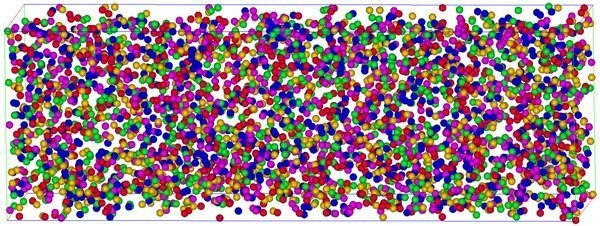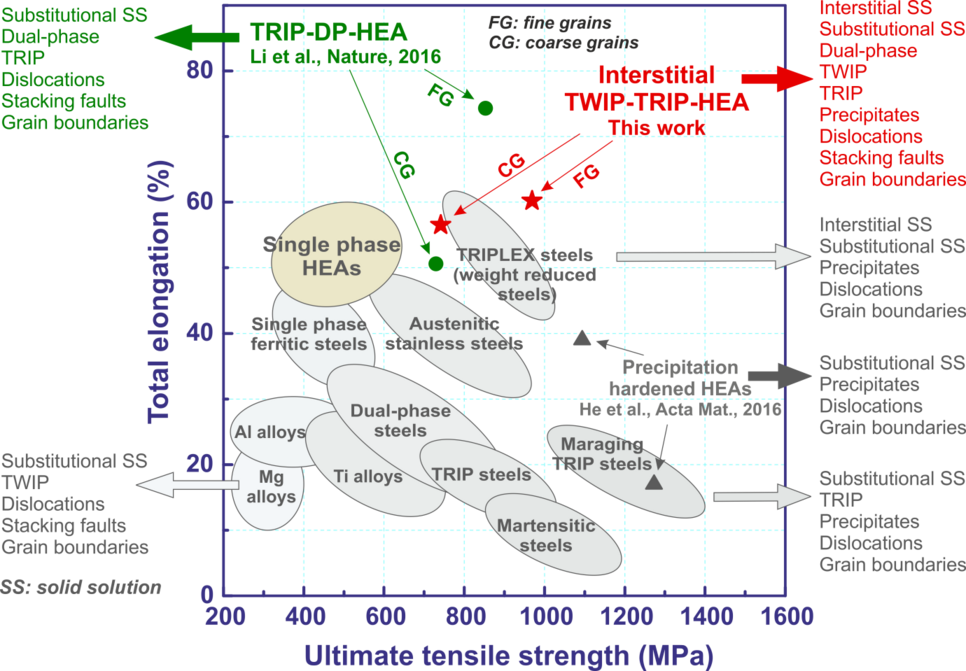
Interstitial atoms enable joint twinning and transformation induced plasticity in strong and ductile high-entropy alloys
In this project, we develop a new class of high-entropy alloys (HEAs) which is interstitially alloyed and unifies all known metallic strengthening mechanisms in one material. This results in joint activation of twinning- and transformation-induced plasticity (TWIP and TRIP) by tuning the matrix phase’s instability in a metastable TRIP-assisted dual-phase HEA. Besides TWIP and TRIP, such alloys benefit from massive substitutional and interstitial solid solution strengthening as well as from the composite effect associated with its dual-phase structure. Nanosize particle formation and grain size reduction are also utilized.

Strength-ductility profiles of various classes of metallic materials including HEAs. All data stem from uniaxial tensile tests conducted on bulk materials at room temperature. While conventional alloys use strengthening mechanisms such as grain boundaries, dual-phase structure, dislocation interactions, precipitates and solid solution (e.g. steels, Ti-alloys, Al- alloys) the new interstitial TWIP-TRIP-HEAs combine all available strengthening effects in one concept, namely, interstitial and substitutional solid solution, TWIP, TRIP, multiple phases, precipitates, dislocations, stacking faults and grain boundaries.
In this work we use carbon as interstitial element in line with two main trends which can be deduced from previous studies on advanced steels: (i) First, the addition of interstitial carbon into a recently developed TRIP-assisted dual-phase HEA leads to an increase in stacking fault energy and hence phase stability. Tuning the stability of the face-centered cubic (f.c.c.) matrix phase in the dual-phase structure to a critical point triggers the TWIP effect while maintaining the TRIP effect, thereby further improving the alloy’s strain-hardening ability. (ii) Second, HEAs benefit profoundly from interstitial solid solution strengthening instead of only the established massive solid solution strengthening provided by its multiple principle elements. This is due to the circumstance that carbon, nitrogen and other interstitials lead to much higher lattice distortions than substitutional elements which strongly affects their interaction with dislocations.
